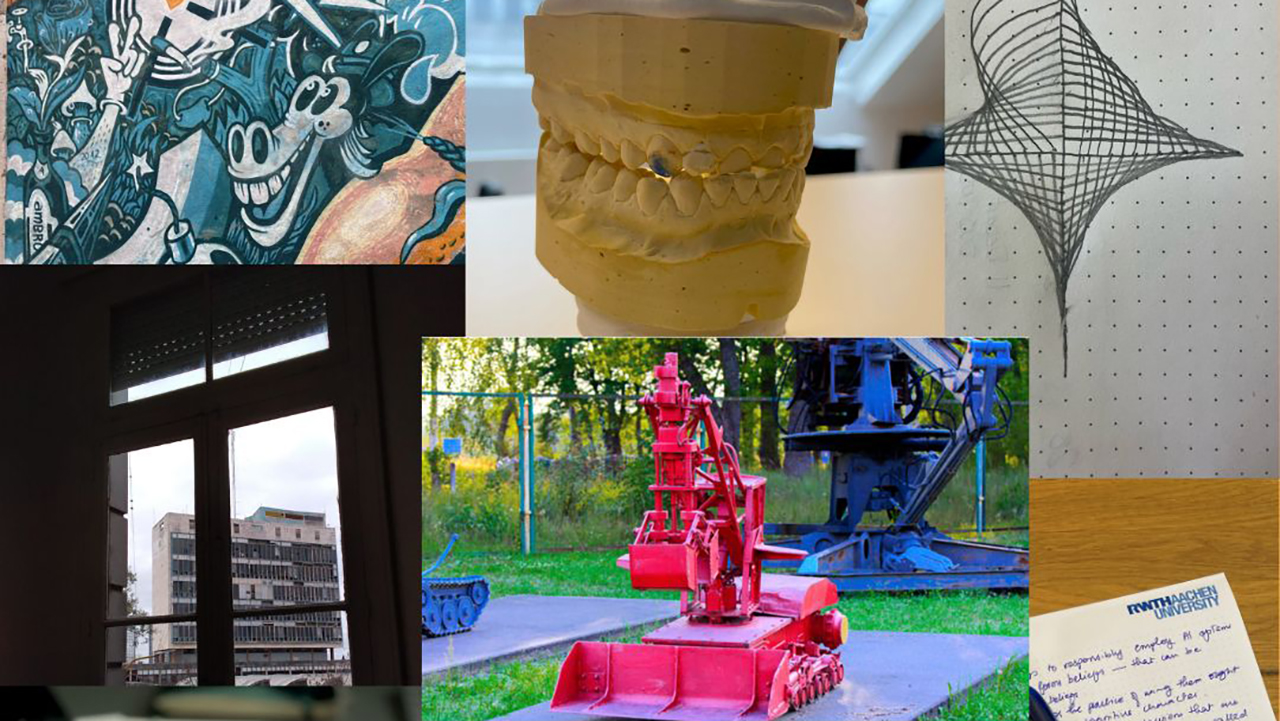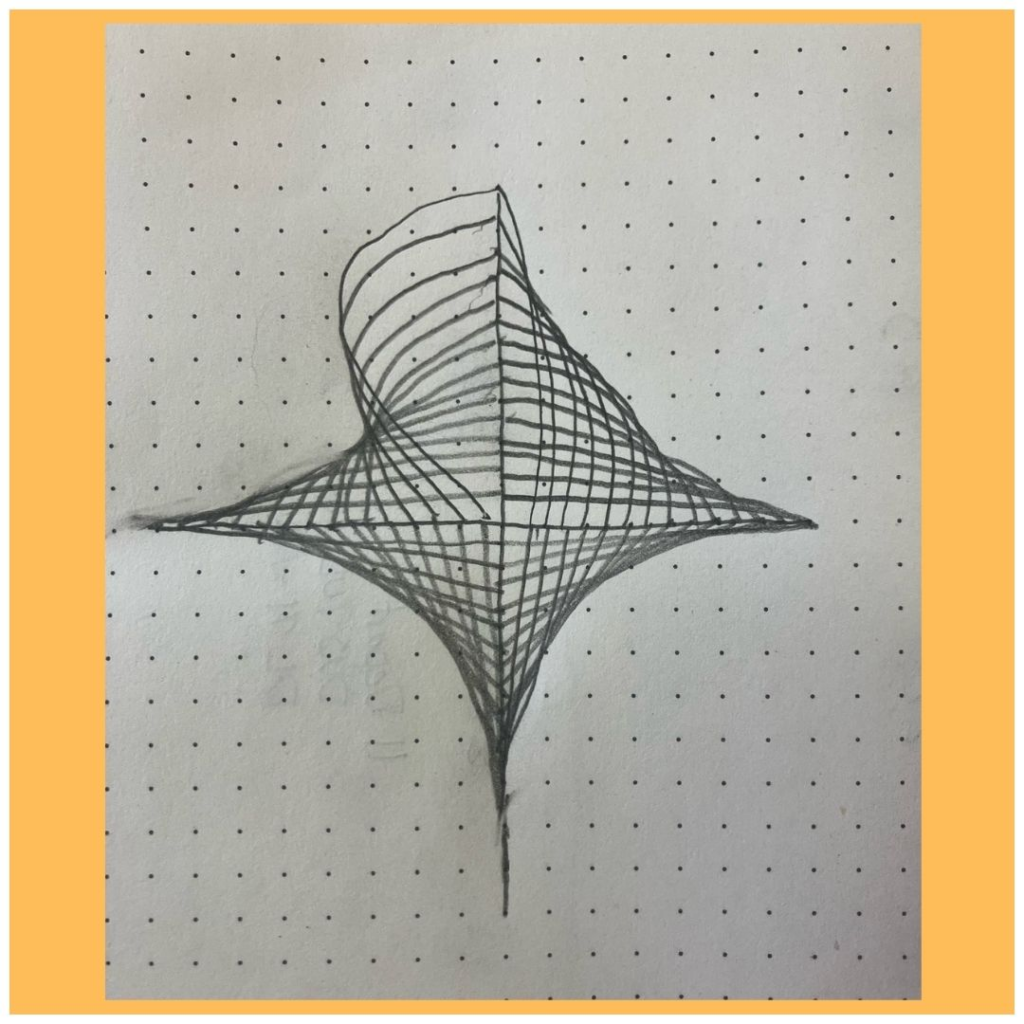Being in the third year of our Fellowship Program, c:o/re is accumulating a remarkable variety of perspectives revolving around its main focus, research on research.
Questions tackled in this lively research environment are highly interesting and exciting and, as such, complex. The meeting of distinct research cultures may stir curiosity but may also leave one wondering what is the other even talking about… What are they studying?
To offer an insightful glimpse into the lively dialogues here, bridging and reflecting on diverse academic cultures, we have started the blog series “Objects of Research”.
We asked current and former c:o/re fellows and academic staff to show us an object that is most relevant to their research in order to understand how they think about their work.
In 12 contributions, we were able to witness the personal connections researchers have to objects that shape their work. We now invite you to visit the individual contributions and explore the world of research once again.
“For the past two decades, I have had a leading role in developing the neuronal network simulator NEST. This high-quality research software can improve research culture by providing a foundation for reliable, reproducible and FAIRly sharable research in computational neuroscience. Together with colleagues, I work hard to establish “nest::simulated()” as a mark of quality for research results in the field. Collaboration in the NEST community is essential to this effort, and many great ideas have come up while sharing a cup of coffee.“
“This is a notebook my Mom gave me. She had it as a kind of leftover from a shopping tour and she thought that it might be of use for my work. And of course, she was right. And as you know, research always starts with a good question that attracts attention.”
“I guess many academics would share some varient of this image: a careful arrangement of computer equipment, coffee, notepads, pens, and the other detritus that lives on (my) desk.
For me it’s important that the technical equipment is shown in conjunction with the paper notebook and pens. I’m fussy about all of these things – it’s distracting when my computer set-up isn’t what I’m used to, and I need to use very specific pens from a particular store – but ultimately my thinking lives in the interactions between them.
My colleagues and I are working on an autoethnographic study of knowledge production, and notice that (our) creative research work often emerges as we move notes and ideas from paper to computer (and back again).”
“I use mechanical pencils (like the one in the photo) to highlight, annotate, question, clarify, or reference things I read in books. This helps me digest the arguments, ideas, and discourses I deal with in my historical and sociological research. I also have software for annotating and organizing PDFs on my iPad as well as a proper notebook for excerpting and writing down ideas. However, I’ve found that the best way for me to connect my reading practices with my thoughts is through the corporeal employment of a pencil on the physical pages of a book.”
“As part of the work I do at KHK c:/ore, as well as extending beyond that, I collect empirical data. In my case, that data consists of records of interviews with scientists and others. Those records can be notes, but they can also be integral recordings of the conversations.
Relying on technology for the production of data is what scientists do on a daily basis. With that comes a healthy level of paranoia around that technology. Calibrating measurement instruments, measurement triangulation, and comparisons to earlier and future records all help us to alleviate that paranoia. I am not immune and my coping mechanism has been, for many years, to take a spare recording device with me.
This is that spare, my backup, and thereby the materialisation of how to deal with moderate levels of technological paranoia. It is not actually a formal voice recorder, but an old digital music player I have had for 15 years, the Creative Zen Vision M. It has an excellent microphone, abundant storage capacity (30 gigabytes) and, quite importantly, no remote access options. That last part is quite important to me, because it ensures that the recording cannot enter the ‘cloud’ and be accessed by anyone but me. Technologically, it is outdated. It no longer serves its original purpose: I never listen to music on it. Instead, it has donned a new mantle as a research tool.”
“When asked about the fundamental object for my research practice, I immediately thought of my computer, which seemed the obvious answer given that I read, study, and write on it most of the time.
Upon further reflection, however, I realized that on my computer, I just manage the initial and final phases of my research, namely gathering information and studying on the one hand, and writing papers on the other.
Yet, between these two phases, there is a crucial intermediate step that truly embodied the essence of research, for me: the reworking, systematization, organization, and re-elaboration of what I have read and studied, as well as the formulation of new ideas and hypothesis. These processes never occur on the computer but always on paper.
Therefore, the essential objects for my research are notebooks, sticky notes, notepads, pens, and pencils.”
“As I research Hegel’s logic and how he understands life as a logical category necessary to make nature intelligible, I work closely with his texts. On the other hand, the stickers on my laptop remind me of the need to look at reality and regularly question the relevance of my research for understanding current social phenomena. In this sense, I think I remain a Hegelian, because for Hegel one can only fully understand an object of research by looking at both its logical concept and how it appears in reality. However, I think that in order to look at current political and social phenomena, we need to go beyond Hegel’s racist and sexist ideas, which are all around his ideas on social organization. And none of this would be possible without a good cup of coffee and/or a club mate!”
“The 3D replica of my teeth that stands on my desk reminds me of two important things. First, a model is what we make of it. The epistemic value of modelling lies in interpretation, which depends on but is not defined by representation. I make something very different of (a replica of) teeth than a dentist and an archaeologist do.
Secondly, and not any less important, this replica reminds me to smile, and I hope that it might inspire colleagues to smile, too, when they see it on my desk.
To tell a smile from a veil, as Pink Floyd ask us to, we need to know that a smile is infinitely more important than scientific modelling. If scientific modelling does not lead to smiling, it is of no value. A smile is a good metonymy to be reminded by.”
“There is a joke about which faculty is cheaper for the university. Mathematics is very cheap because all they need is just pencils and erasers. But philosophy is even cheaper because they don’t even need erasers.
My favorite and indispensable object is the rOtring 600 mechanical pencil. It shows that social science is closer to mathematics than to philosophy. Of course, social scientists often need more than pencil and eraser: they have to collect and process data from the real world. But this processing is greatly facilitated by the ability to write and erase your observations.
In my work, I deal with the transcripts of human-machine communication, and I use the rOtring 600, which has a built-in eraser, a lot. It’s useful not only because of the eraser, but also because it’s designed to stay on the table and not break, even in very demanding circumstances like the train journey. And it gives me the feeling that I am making something tangible with it, because it reminds me of engineers or designers producing blueprints for objects and machines.”
“A pen and a notebook are essential for my research. They help me think. It’s not at all about the words I write. I rarely read them again. Scribbling is just an act that helps me stack ideas on top of each other and do all the complicated thinking and connection-building.
I also turn to scribbling in my notebook when I am stuck in the writing process. There is often a time after the first rough draft of the paper when some ideas stop flowing smoothly or don’t fit very well with the main argument. I turn to the notebook and start writing the main ideas, deliberating how they support each other.
This is all especially interesting since a lot of my research is about extended cognition, which is the idea that we sometimes employ external resources such that part of our thinking happens outside our body (in these resources).”
“Spending a few weeks in Argentina, in front of my desk, a Post Office building. A nice futuristic architectural concept, degraded by its construction materials, support of a communication antenna, appropriated by pigeons as a dovecote: a hybrid object.”
“By saying that I study ‘artful intelligence’, which I mean only as a half joke, I take seriously the propositions to my career as a media scholar that…
1. As the first image suggests, human artfulness can be found all around, such as this snapshot of a wall on a side street not far from the Cultures of Research at the RWTH.
2. Sometimes architectural masterpieces that represent more than the sharp angles of twentieth-century modernism are all about us, such as this bus stop on the way to Cultures of Research in Aachen. Any study of science and technology has to ask, what does it mean? Sources do not speak for themselves.
3. Sometimes artificial intelligence is best found in letting people be people, such as a doodle here in a sketchbook. Straight lines do not always precipitate straightness.
4. I study how science, technology, and artificial intelligence has been understood in different times and places, such as this remote-controlled robot that failed in the immediate aftermath of the Chernobyl explosion in 1986 in Soviet Ukraine, which helps unstiffen, enliven, and sober our imagination of what may already be the case today and could be the case tomorrow.”
Thank you for joining us on this journey. We look forward to share more insights and stories with you!


















